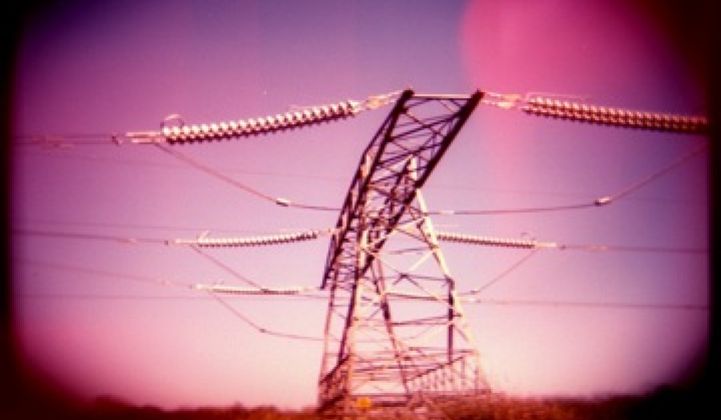Our grandparents footed the bill for the power grid long ago and had the vision to make the American grid what it is today. But like the elderly, the grid is aging.
It’s our generation’s job to upgrade it.
Last week, GE, The World Economic Forum, Accenture and others discussed the roll-out of the smart grid and the importance of having a plan now so we can have a more intelligent grid in the future.
During the webcast, WEF and Accenture discussed their report on Accelerating Successful Smart Grid Pilots.
Utilities are living on borrowed time, warned Bob Gilligan, VP for GE's Digital Energy business.
Most of the world relies on electricity systems built 50 years ago. There’s an estimated 30 trillion dollar investment in the infrastructure -- and smart grids will enable this transition, according to a video brought by The World Economic Forum folks.
If you consider the fact that by 2030, more than 60 percent of the global population will live in cities, it’s obvious that we need to reinvest in the grid. The investments will pay off by making the grid more reliable and more energy efficient.
Twenty years may seem like a long time in the future to plan for, but in the utility market, you need to start today.
Pilots are useful because they give the utilities and their partners a way to innovate without much risk involved and an opportunity to collect enough data to justify smart grid investments. The pilots also provide a way of testing a new technology before a complete installation of the smart grid occurs.
“This is about a digital revolution. I want to call it an evolution. We can’t get confused by this time frame. We talk about all the things that could happen between 2010 and 2020. What has to happen now is we have to start realizing that promise today,” said Mark Spelman, Global Head of Strategy at Accenture.
There’s a lot of focus on meters in America and Europe. But in China, the talk is about ultra voltage transmission, wanting to transport power from cities in the west to the east. It’s about optimization. The starting points are different, for some people, it’s an aging infrastructure problem, and that is a very valid reason to look at smart grids. Others are looking for high-value-added manufacturing.
Building smart grids isn’t a one-size-fits-all model. It’s not all about utilities. Especially when you have electric vehicles and renewable sources feeding the grid, and you combine that with utilities interacting with the communications and advertising sector.
You need to get to a bigger scale roll-out. But you also have to realize it can succeed and fail.
“No one is translating the data into real-time carbon,” said Miriam Horn, director, Smart Grid Initiative, Environmental Defense Fund. “The key for the pilots is to translate [the findings into] usable data.”
The grid doesn’t just need an infrastructure overhaul; it needs patrolling intelligence.
“We need to protect our system from cyber attacks,” said Larry Makovich, managing director of IHS CERA.
Customers will be highly motivated as costs go up. The price of electricity will go up dramatically over the next 20 to 40 years. Customers will want more control over their electricity bill, said one of the panelists.
We have to replace our existing plant fleets. We need to get ahead of the rising prices, which may easily go up by 20 percent to 40 percent in the years ahead.
At the end of the day, there are too many pilots taking place in isolation. More pilots need to be studied from beginning to end to paint a clear picture of the long-sought-after smart grid. The grid will crumble without repairs, so we might as well make it smarter so that doesn't happen.



